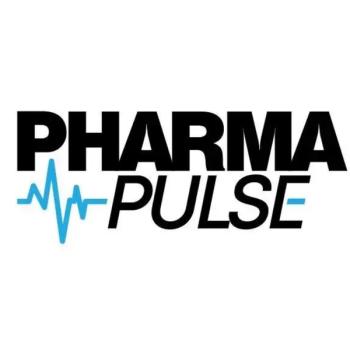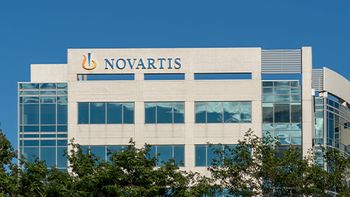
- Pharmaceutical Commerce - November 2021
- Volume 16
- Issue 4
Preserving Drug Sampling Activity
A dramatic shift to e-sampling has been the effective counter to the reduced number of rep visits to physicians’ offices
Handing off drug samples to healthcare professionals (HCPs) is a time-honored, integral part of pharma sales and marketing; the industry commits the equivalent of tens of billions of dollars to it in the US and abroad. For sales reps specifically, it is often the best or easiest way to get into the HCP’s office. Nor should it be ignored that since the late 1980s, the activity has been highly regulated by the Pharmaceutical Drug Marketing Act (PDMA), which created the need to document how samples are distributed.
Potentially, the sampling practice would have been upended by the pandemic (no, or drastically reduced, sales calls) except for two factors: FDA relaxed some PDMA requirements in early 2020; and the service providers to pharma for sample accountability—a relatively small number of specialized firms—had already developed digital tools to enable samples to be delivered at HCP request.
FDA’s action came very early as the pandemic settled in—its June 2020
FDA does not intend to take action against a manufacturer or authorized distributor of record that accepts alternate ways of verifying delivery and receipt of drug samples instead of obtaining the signature of the person acknowledging delivery…
Additionally, the guidance explicitly allowed for samples to be delivered to the HCP’s home, or an associated hospital or pharmacy (there was no specific guidance on this previously). Somewhat controversially, the guidance also allows for delivery to the home of a patient under that HCP’s care.
The main rationale for these modifications was the dramatic drop-off in patient visits to doctors’ offices, as well as the equally dramatic increase in telemedicine. Telemedicine went from 4% of patient-HCP interactions to 60% “practically overnight,” says Maria Whitman, global head of pharma and biotech at ZS, the professional services firm. “The importance of sampling became evident,” she says, “and patients and doctors were looking to manufacturers to find workarounds” to the lack of in-person sample delivery.
As a result, manufacturers dusted off, upgraded or swiftly adopted various e-sampling technologies that have existed in the industry for years, but were only slowly being adopted. “The e-sampling and direct to practitioner channels—which used to be an option—have now become table stakes for the vast majority of customers we support,” declares Eric Johnson, chief commercial officer at J. Knipper, one of the industry leaders in sampling management services. Data the company collected on its digital platforms show a more-than 2x increase in digital sampling channels starting in April 2020 (see chart below). That gradually declined over the next seven months, as sales reps returned to the field, but still well above the March 2020 level.
“For years, I’ve been talking about the value of a multichannel approach to HCP interactions by pharma,” adds Mark Jara, CEO of RxS LLC, a New Jersey firm exclusively dedicated to sample management and related services. “When Covid-19 hit, pharma sales organizations weren’t prepared for the all-virtual environment, but our digital platforms were embraced quickly, and it has just increased exponentially since.”
Industry data cited by Jara and others describe a situation where around 70% of sales rep-HCP interactions were face-to-face pre-Covid, which temporarily went to zero during the early lockdowns. It has since revived to around 30% of interactions—the rest being various virtual calls or digital communications.
E-sampling has taken on a variety of forms, tailored either to the desires of HCPs requesting the samples, and/or the compliance needs of the manufacturers, as well as their preferred marketing methods. A basic form allows a rep (or the CRM system the manufacturer is using) to send a sample-request form to the HCP; this can be accompanied by the digital signature of the HCP, along with required address and affiliation information. Another version allows the HCPs themselves to initiate the request.
J. Knipper announced an upgraded platform, SamplicitySA, in August. The platform enables direct-to-practitioner, direct-to-rep and direct-to-patient ordering; the direct-to-practitioner version is initiated by the HCPs themselves. The “SA” component of SamplicitySA is enhanced sample accountability through a user dashboard. Other components of the platform enable analytics and connection to Knipper’s in-house sales support services (Knipper handles both the software development of Samplicity, as well as order fulfillment and sales support).
At RxS, there are three interrelated systems: LinkedRx, for overall sample management, accountability and reporting; TeleTargetRx, for accompanying telemedicine/virtual sales situations; and SampleCentral, a portal for HCP-initiated sample requests. The latter emphasizes an “HCP-centric” approach, says Jara; some physicians (especially those in “no-see” offices that don’t permit rep visits) prefer to manage their own sample activities. The system is device-independent, running on smartphones, tablets or desktops. “It’s a customer-centric process, but the rep is still involved,” he notes. “He or she can note what the doctor is ordering, and interrupt the process to, for example, arrange a conversation with that person.” Overall, the platforms are intended to give reps a fuller “toolkit” for managing HCP interactions.
SymmetryRx provides a self-service (for physicians) sampling portal, complete with e-signature and e-request features, as well as an IT system, branded as RadiusXP, that can be used by pharma sales teams directly. Most recently, the company built out a direct-to-patient sampling platform.
Data-services firm IQVIA for the global pharma industry, provides a suite of IT solutions for sample management, regulatory compliance and allocation optimization, and works with a strategic partner to provide field services (such as auditing inventories at field offices). These services can interact with the overall CRM solution of the firm, Orchestrated Customer Experience (OCE).
For their part, both RxS and J. Knipper are strategic partners of Veeva, the leading CRM platform for life sciences sales teams. RxS’ Jara says his company’s software can pull data out of, or provide input to, a Veeva implementation to meet pharma needs.
Other pharma CRM systems, such as StayInFront, Synergistix or Salesforce.com, have various levels of data-sharing or actual sample-accountability management; Synergistix, for example, offers in-house support for regulatory compliance and reporting.
Post-Covid
ZS’ Whitman says that the pharma industry struggled mightily to react to the pandemic shutdowns in switching to vendor solutions like those listed above, or to modify their own internal processes. “There were some bumps along the way, early on, with some physician practices complaining of a lack of sample availability, and some worried about an oversupply,” she says. “It took some time to get the right business rules in place.”
Based on surveys ZS has conducted, roughly two-thirds of primary care physicians, for example, complained of a lowered availability of samples; on the other hand, 73% of oncologists and rheumatologists said their needs were being met.
There could be a particular reason for samples’ emphasis in oncology or related specialties, many of which involve injected biologics: a sample prefilled syringe gives the physician an opportunity to guide the patient on proper self-administration of the drug. “Avoiding a second visit to the doctor’s office to get a demonstration is a value-add for both the patient and the physician,” says Whitman. “Before Covid, and after, pharma marketers in these specialties are concerned with losing patients between diagnosis and treatment. Providing this service is in the mix of patient services and support.”
Mention of biologics and oncology also highlights another aspect of sample accountability: ensuring that the right physician specialties are getting the appropriate samples. “Under PDMA, there are inclusions and exclusions for samples based on the medical specialty,” notes RxS’ Jara. Physician affiliations and practice areas need to be documented to justify distributing samples to that physician. According to Jara, this is another reason to consolidate sample administration on one platform across sales teams and across medical specialties—otherwise, the left hand might not know what the right hand is doing.
One aspect of sample distribution during the pandemic whose future is still undetermined is direct-to-patient servicing. “So far, we’re seeing this as having limited appeal; industry is waiting for clearer direction from FDA,” says Jara. There are numerous risks to the manufacturer in this practice, even with the intercession of the physician making the request.
Johnson of J. Knipper describes the elaborate process on the sample-fulfillment side for direct-to-patient. “First off, the physician’s request for a sample is treated as protected health data, and from this point on, the data will be housed in a separate set of data tables with no visibility to our clients and a small subset of need-to-know people on the Knipper side.” Then, the system checks to see if both the physician and the patient are in a state that allows direct to patient sampling. The order is then processed against standard compliance business rules as well as client business rules. Finally, if the order passes all of those business rules, it is transferred to the warehouse to be fulfilled.
Still, as Whitman points out, it is likely that telemedicine will remain a larger component of office practices after the pandemic and, if so, direct-to-patient sampling might be equally popular. ZS’ physician-survey data show that providing samples is one of the highest-cited benefits the pharma industry can provide, second only to financial support for patients.
- Nicholas Basta is Editor Emeritus and Founder, Pharmaceutical Commerce
Articles in this issue
about 4 years ago
Pharmaceutical Commerce - November 2021 Issue (PDF)about 4 years ago
AI’s predictive power on the big stageabout 4 years ago
What’s Next for Med Tech?about 4 years ago
Chatbot Potential in Clinical Researchabout 4 years ago
The Pulse of Digital in Pharmaabout 4 years ago
RWD Benefits at the Point of Careabout 4 years ago
Pharma & Big Data: New Heights Beckonabout 4 years ago
Marketing Data Hubs: When Operations and Analytics Collideabout 4 years ago
CSA a Game Changer for the Life Sciences?about 4 years ago
The Key Force in CGT CommercializationNewsletter
Stay ahead in the life sciences industry with Pharmaceutical Commerce, the latest news, trends, and strategies in drug distribution, commercialization, and market access.




